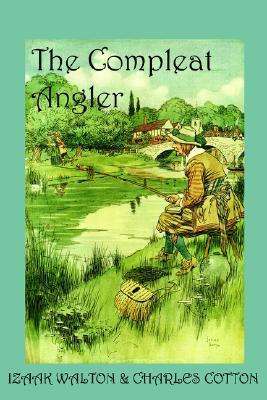Chapter XVII — The Compleat Angler
byChapter XVII – The Compleat Angler brings attention to an overlooked but deeply effective method of freshwater angling using natural baits, particularly different types of cadis-worms. These aquatic larvae, especially favored by Trout and Grayling, offer anglers a more dynamic and productive approach than the traditional fly. By alternating the bait’s position—sometimes near the riverbed and other times near the surface—the fisherman can mimic the natural movements of prey, triggering eager bites. A smaller hook is recommended, provided it’s strong, as it enhances both the realism of the bait and the hook’s ability to remain discreet. Anglers using this technique often report more frequent strikes and larger catches than when fly fishing, especially in off-peak fly hatching seasons. The cadis not only prove versatile but also maintain their effectiveness across varied river conditions.
Anglers familiar with cadis varieties often distinguish between the long-bodied and the smaller black-legged versions. The longer cadis is preferred for Grayling due to its form, while the shorter ones appeal more to Roach and Dace. These worms thrive in different habitats—some cling to gravels, others around reeds—and their availability in the wild makes them a cost-effective option. It’s advised to keep these baits fresh in moss, stored with bits of gravel, and regularly refreshed, especially in summer heat. Doing so keeps the scent and liveliness intact, which boosts their attractiveness underwater. This preparation reflects a harmony between angler and stream, where success is earned through both patience and care for natural materials.
The gravel-worm, sometimes called the rush-worm, presents another useful option. Found near the edges of rivers, especially where clay and gravel meet, this worm is slightly larger than the cadis but equally effective. Multiple worms can be placed on a single hook, making the bait appear like a cluster of prey, which increases the chances of enticing cautious fish. For best results, rods should be light, with fine lines that don’t disturb the water. This ensures subtle presentations that mimic natural feeding behavior, which is crucial in clear, slow-moving streams. The gravel-worm also draws Chub and Dace with consistent success, especially in shaded pools and near submerged stones.
The art of using cadis and gravel-worms lies not only in technique but also in observation. Weather, water clarity, and temperature all influence how fish respond to movement and scent. During overcast or rainy periods, these worms often become more active and thus more appealing. Experienced anglers track not just the time of day but the behavioral shifts in the water itself. Fish become attuned to seasonal changes, and these natural baits adapt with them. In such rhythms, a skilled angler reads the stream almost like a book—each pool and bend offering its own story.
For those who desire sport beyond just catching fish, this chapter serves as a meditative guide. It’s not about the flashiness of technique but the consistency of a thoughtful method. Fishing becomes a quiet negotiation with nature—knowing what bait to offer, when, and how gently to present it. These moments, strung together through practice, create a deeper appreciation for the waters and their cycles. Piscator’s advice remains timeless not because of any one secret but because it elevates simplicity to a meaningful discipline.
The emphasis on light rods and responsive lines suggests that finesse is more valued than brute strength. This philosophy reflects the broader ethos of “The Compleat Angler”—that satisfaction lies in subtlety and awareness rather than domination. Fish are not just targets; they are part of a living system, and the angler’s goal is to interact with that system respectfully. When practiced well, this form of bait fishing feels as much like listening as it does casting. A well-timed tug or a gentle pull from the current speaks louder than a hundred casts in the wrong place.
Taken together, the teachings in this chapter encourage anglers to step away from modern haste and return to foundational skills. By refining bait techniques with care and consistency, one not only increases the likelihood of a good catch but also becomes more attuned to the ebb and flow of the stream itself. This gentle intimacy with nature yields a reward greater than the fish caught: a sense of belonging and attentiveness that transcends sport. Through natural baits, anglers are reminded that their craft is as much about reverence as it is about recreation.


